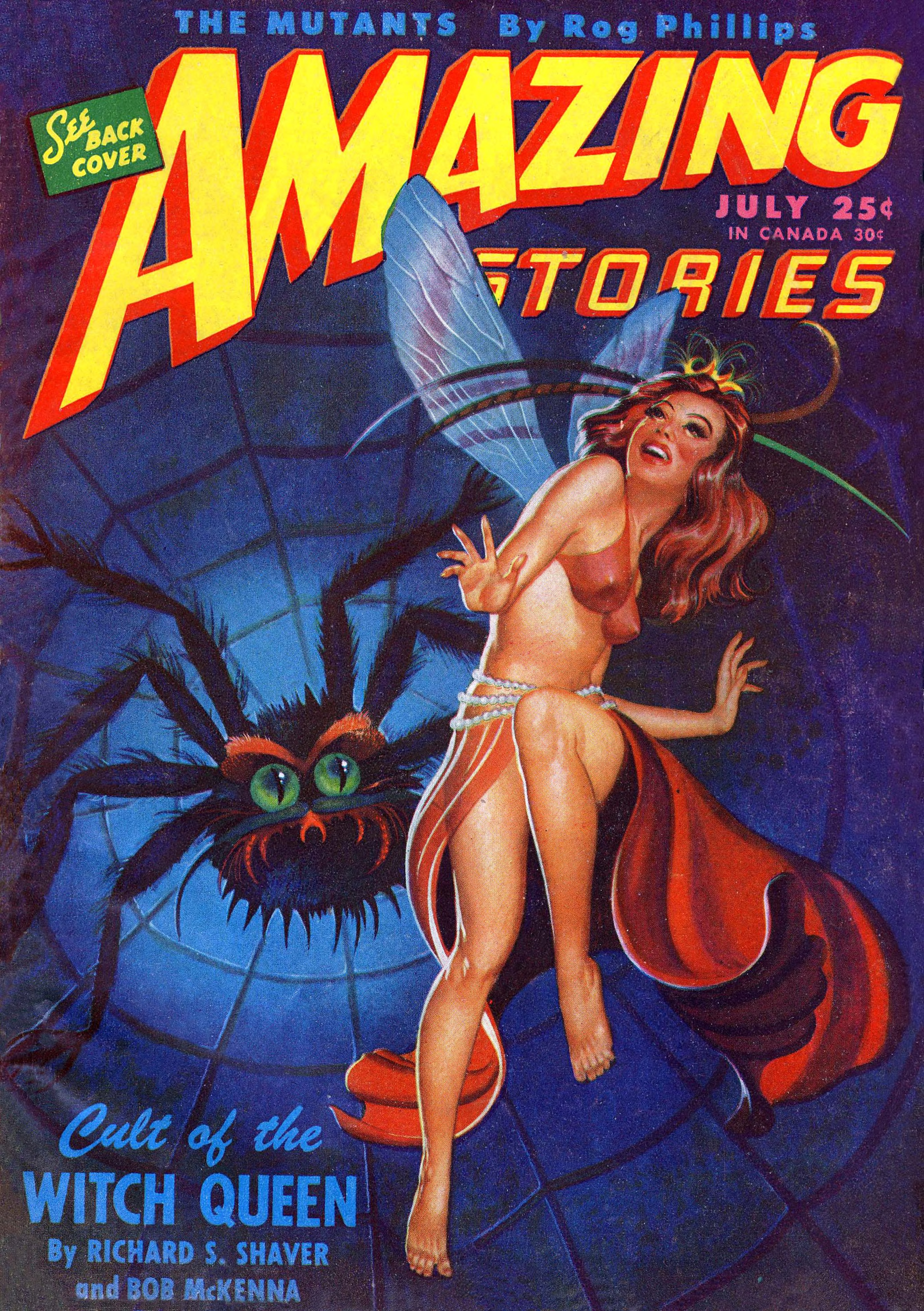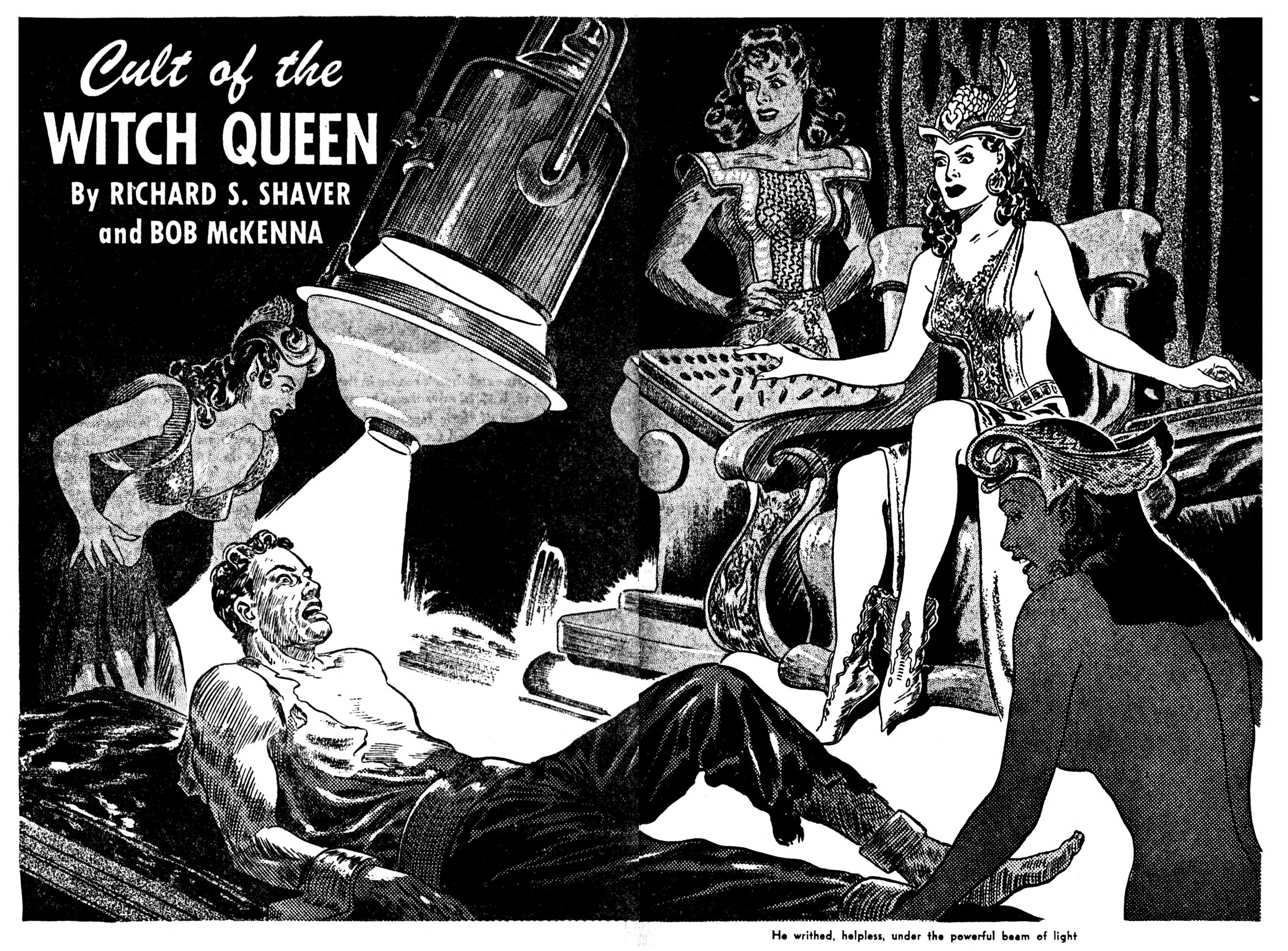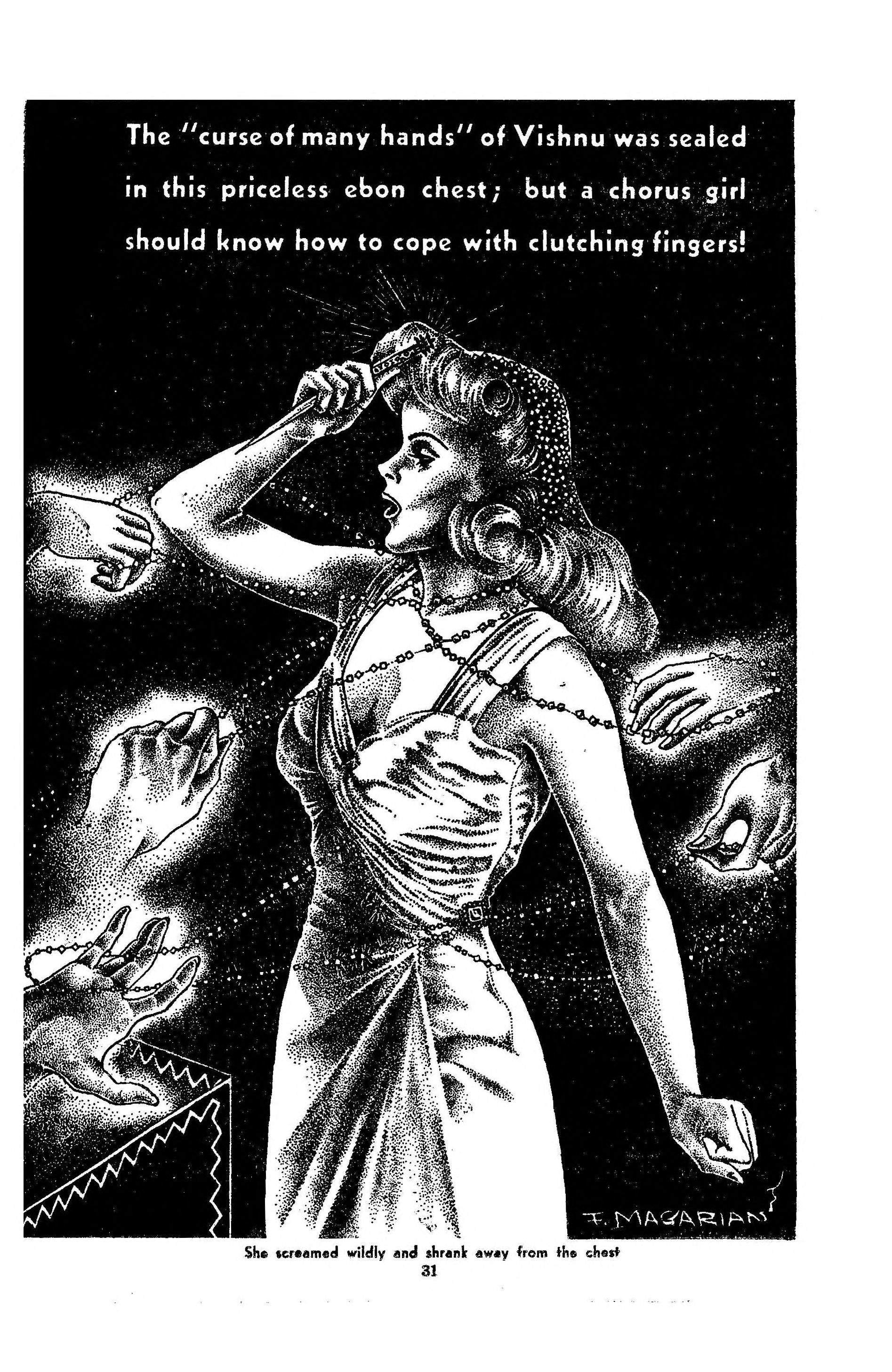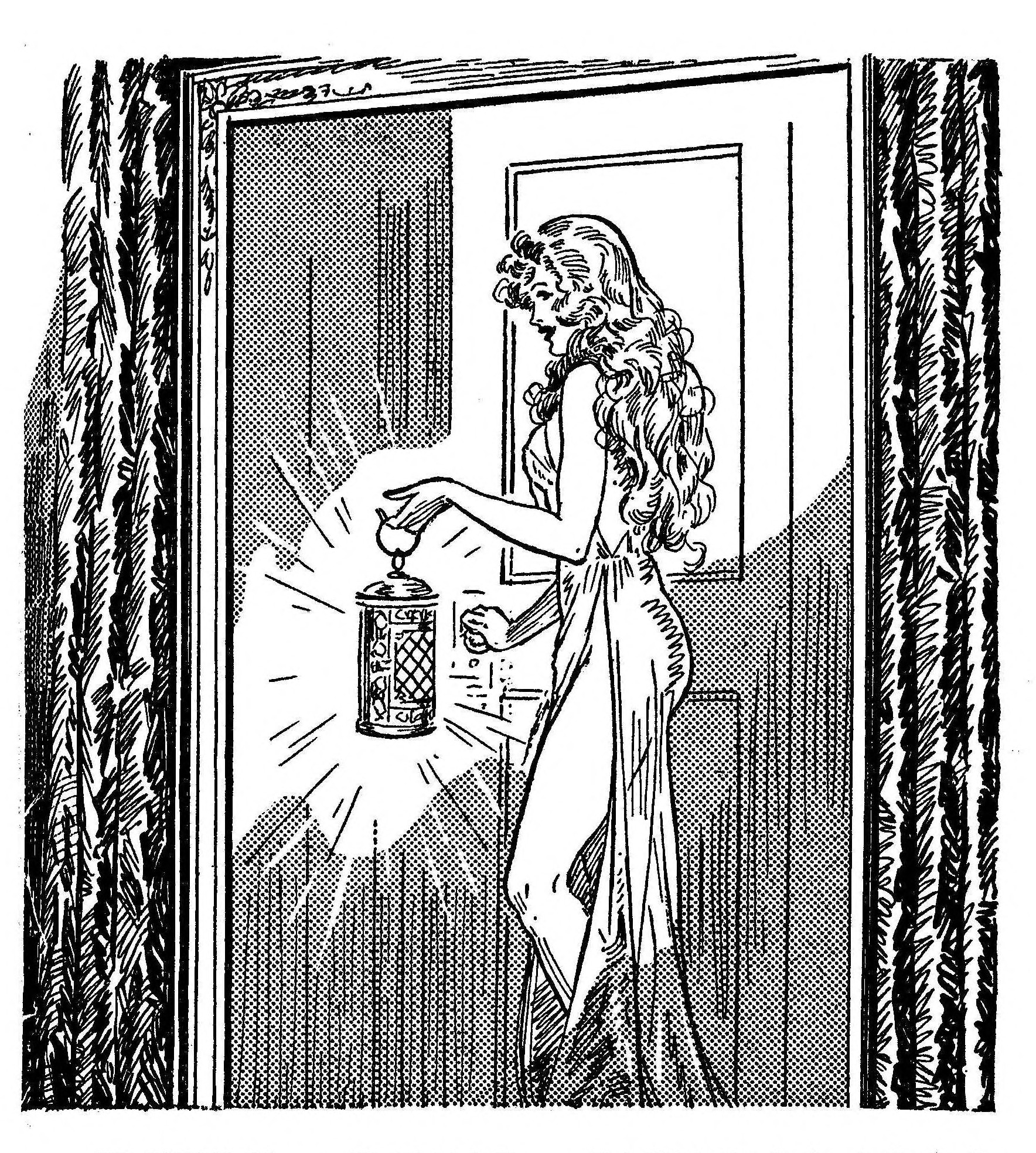This cover by Malcolm Smith for the April 1942 issue of Fantastic Adventures definitely gives off a tube-girl vibe. The interior art didn’t much impress me, but you are welcome to see for yourself as this issue of Fantastic Adventures is available to read and download at the Internet Archive.
Tag Archives: Malcolm Smith
Some good postwar Erotic Mad Science pulp

Amazing Stories for July 1946 has a well-executed cover by Walter Parke, about whom I have been able to find out very little aside from his being born in 1909 Little Rock, Arkansas, and that he appears to have been a classically-trained fine artist for whom this sci-fi cover might have felt like slumming. Certainly it is fine fuel for those who like to imagine what the wicked spider will do with the pretty fairy once he has ensnared her.
The first big piece of interior art is something impressive and very mad science, done by the prolific Malcolm Smith, whose work we have seen here before. As published this illustration for McKenna and Shaver’s story “The Witch Queen” stretched across two pages. I’ve stitched it back together as best I was able; discerning eyes will note that my work is not perfect. It’s big in original size, you you may wish to click and download.

This issue of Amazing Stories is available to read and download at the Internet Archive.
Produced in the ring
The cover illustration to the April 1943 edition of Fantastic Adventures is classic erotic mad science and was executed by the great Malcolm Smith (1910-1960), who some readers here might remember as the creator of one of the best early tube-girl images.
This issue has its share of decent interior art images, such as this one, sadly uncredited, to Harold Lawley’s story “Daughters of Darkness.”
But a favorite is this one by Florence Magarian (1912-1960), illustrating E.K. Jarvis’s novelette “The Curse of Many Hands.”

It’s decent supernatural femme peril, but what really struck me was the short biographical paragraph offered to Mrs. Magarian at the ISFDB.
Florence Lillian See graduated Polytechnic High School in Los Angeles and attended the Otis Art Institute, where she met and married Albert Ararat Magarian on May 25, 1937, in Los Angeles. During the 1940s the Magarians worked as interior artists for magazines published by Ziff-Davis Productions in Chicago. Constant fear of losing her husband to service in World War II and the demanding workload of their career caused Florence to suffer a nervous breakdown. She spent the rest of her life in and out of the mental institution at Alton, Illinois, where she passed away in 1960.
Many artists have sad life stories, but this one struck me as unusually poignant.
This issue is available to be read or downloaded at the Internet Archive.



